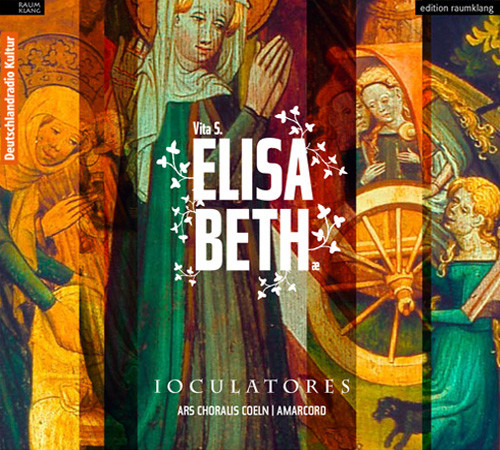VITA S. ELISABETHæ
Das Leben der heiligen Elisabeth von Thüringen (1207–1231), erzählt in mittelalterlichen Liedern und Texten/ The life of St. Elisabeth of Thuringia (1207–1231), told in medieval songs and texts
IOCULATORES
ARS CHORALIS COELN
AMARCORD
Eine Co-Produktion mit Deutschlandradio Berlin
Ungarische Prinzessin, Thüringische Landgräfin, Krankenpflegerin, Heilige – wer war sie, diese »Mutter Theresa des Mittelalters«? Um das Leben der heiligen Elisabeth ranken sich zahlreiche Legenden, die auf dieser CD anhand der »Vita S. Elisabethæ«, einem Legendenroman aus dem frühen 14. Jahrhundert, deklamiert werden. In beeindruckender Vielfalt und einem Aufgebot von drei Ensembles – Ioculatores, amarcord und Ars Choralis Coeln – illustrieren dazu Minnelieder, Estampien, Auszüge aus höfischen Epen, ein ungarischer Tanz, Prozessionsgesänge, Hymnen, Sequenzen und Psalmen den erstaunlichen Lebensweg der Elisabeth von Thüringen.
Das reich bebilderte Booklet ergänzt mit den vollständigen Liedtexten und weiteren Legenden die umfassende musikalisch-literarische Dokumentation zum 800. Geburtsjahr der heiligen Elisabeth.
Saint Elizabeth, the „Mother Theresa of the Middle Ages,“ was Princess of Hungary and the sister of Saint Hedwig, who later became the patron saint of Silesia. Elizabeth was taken as a child to Wartburg Castle, the home of her future husband, later Landgrave Louis IV of Thuringia; together with him, she was prepared there for their common task. Feeding the hungry became Elisabeth’s life’s work and spiritual vocation; her husband tolerated this charity as a spiritual whim. When, during a famine in 1225, the Landgravine’s generosity endangered the supply of the Wartburg itself, Ludwig immediately forbade his wife her charitable work. In this context, the legend tells of the „rose miracle“: when Ludwig wanted to examine a basket covered with a cloth in which Elisabeth was bringing bread to the starving, the bread turned into roses before the eyes of the angry landgrave, and his wife could not be proven to still be supporting the poor at the foot of the castle.

